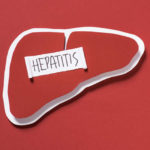Blood Tests vs. Biopsy For Fibrosis Assessment
This reference is from an article in the latest issue of the medical journal, Gastroenterology.
What we found most interesting is the reference to the fact that biopsy can be painful and dangerous and that assessment of biopsies is subjective and prone to sampling error. So much for accuracy in the gold standard test for gauging liver condition.
More and more progress is being made with blood and serum tests to determine fibrosis progression and liver condition. This bodes very well for keeping an eye on liver disease progress without invasive and potentially dangerous or faulty biopsies.
Our only question is why the authors concluded this could or should be used in conjunction with biopsy. We feel “instead of” may be a better choice.
Serum Markers Detect the Presence of Liver Fibrosis
Histologic examination of a liver biopsy specimen is regarded as the reference standard for detecting liver fibrosis. Biopsy can be painful and hazardous, and assessment is subjective and prone to sampling error.
Researchers developed a panel of sensitive automated immunoassays to detect matrix constituents and mediators of matrix remodeling in serum to evaluate their performance in the detection of liver fibrosis.
In an international multicenter cohort study, serum levels of 9 surrogate markers of liver fibrosis were compared with fibrosis stage in liver biopsy specimens obtained from 1021 subjects with chronic liver disease.
Discriminant analysis of a test set of samples was used to identify an algorithm combining age, hyaluronic acid, amino-terminal propeptide of type III collagen, and tissue inhibitor of matrix metalloproteinase 1 that was subsequently evaluated using a validation set of biopsy specimens and serum samples.
Results
The algorithm detected fibrosis (sensitivity, 90%) and accurately detected the absence of fibrosis (negative predictive value for significant fibrosis, 92%);
Performance was excellent for alcoholic liver disease and nonalcoholic fatty liver disease.
The algorithm performed equally well in comparison with each of the pathologists.
In contrast, pathologists’ agreement over histologic scores ranged from very good to moderate.
Conclusions
The authors conclude, “Assessment of liver fibrosis with multiple serum markers used in combination is sensitive, specific, and reproducible, suggesting they may be used in conjunction with liver biopsy to assess a range of chronic liver diseases.”
12/03/04
Reference
W M C Rosenberg and others. Serum markers detect the presence of liver fibrosis: A cohort study. Gastroenterology 127(6): 1704-1713. December 2004.







